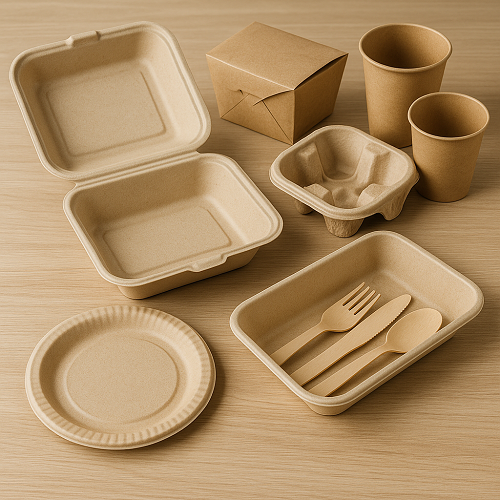Embracing Sustainability: The Rise of Eco-Friendly Biodegradable Packaging for Foodservice Uses
The foodservice industry is experiencing a transformative shift toward sustainability, and Eco-Friendly Biodegradable Packaging For Foodservice Uses is at the heart of this movement.
With increasing environmental awareness and consumer demand for greener practices, food businesses are embracing packaging solutions that reduce ecological impact.
What Is Eco-Friendly Biodegradable Packaging?
- Eco-Friendly Biodegradable Packaging For Foodservice Uses refers to materials that break down naturally without harming the environment.
- These packaging solutions are made from renewable sources like cornstarch, sugarcane, bamboo, or kraft paper.
- Unlike traditional plastics, they decompose into non-toxic elements, reducing landfill waste and pollution.
Their design prioritizes both functional performance and environmental responsibility.
Common Materials Used in Eco-Friendly Biodegradable Packaging
- Bagasse (Sugarcane Pulp): A byproduct of sugar production, it is molded into plates, bowls, and containers.
- Polylactic Acid (PLA): Derived from fermented plant starch (like corn), this bioplastic is often used for clear containers and cutlery.
- Bamboo: Fast-growing and renewable, bamboo is used for utensils and trays.
- Kraft Paper and Cardboard: Strong, recyclable, and biodegradable, ideal for sandwich wraps and food boxes.
- Palm Leaves: Naturally fallen leaves are molded into sturdy tableware.
All of these materials are key in the production of Eco-Friendly Biodegradable Packaging For Foodservice Uses.
Benefits of Eco-Friendly Biodegradable Packaging For Foodservice Uses
- Environmental Protection: Reduces plastic pollution and carbon footprint.
- Compostability: Breaks down into organic matter, enhancing soil health when composted properly.
- Consumer Appeal: Customers are increasingly choosing eco-conscious brands.
- Regulatory Compliance: Many regions are banning single-use plastics, making Eco-Friendly Biodegradable Packaging For Foodservice Uses a necessity.
- Brand Differentiation: Businesses can enhance their image and align with sustainability values.
Challenges and Considerations
- Cost Factor: Often more expensive than conventional plastic, which may deter small businesses.
- Composting Infrastructure: Not all regions have industrial composting facilities to handle biodegradable materials.
- Durability Limitations: Some biodegradable options may not perform well under high heat or moisture.
- Misleading Labels: Not all “biodegradable” products are compostable or eco-friendly; certification is essential.
Despite these challenges, the demand for Eco-Friendly Biodegradable Packaging For Foodservice Uses continues to rise.
Applications Across the Foodservice Sector
- Restaurants and Cafés: Use compostable containers, straws, and bags to serve dine-in and takeout customers.
- Catering and Events: Disposable plates and utensils made from biodegradable materials reduce post-event waste.
- Food Trucks: Rely on lightweight and earth-friendly packaging for mobile food delivery.
- Grocery and Delis: Use eco-conscious containers for ready-to-eat meals and pre-packed foods.
- Corporate and School Canteens: Adopt sustainable practices through the consistent use of Eco-Friendly Biodegradable Packaging For Foodservice Uses.
Future Trends in Sustainable Packaging
- Innovation in Materials: Development of seaweed-based, mushroom-based, and edible packaging.
- Circular Economy Integration: Reuse, composting, and recycling will become industry standards.
- Smart Packaging: Eco-friendly packaging with features like QR codes to guide users on proper disposal.
- Policy Support: Governments worldwide are expected to introduce more regulations favoring Eco-Friendly Biodegradable Packaging For Foodservice Uses.
- Wider Adoption Across Industries: Even non-food sectors may look to this model for packaging solutions.
The movement toward Eco-Friendly Biodegradable Packaging For Foodservice Uses is more than a trend—it is a critical step toward environmental stewardship.
While challenges exist, innovation and growing consumer demand continue to drive progress.
Adopting these sustainable packaging options positions food businesses as leaders in the fight against pollution.
From materials and applications to benefits and future trends, the role of Eco-Friendly Biodegradable Packaging For Foodservice Uses is undeniable in creating a greener planet.






























